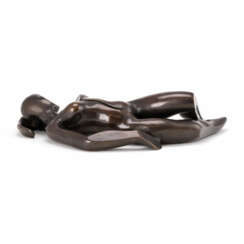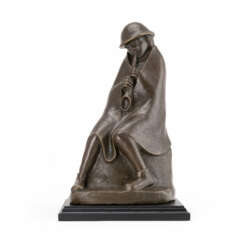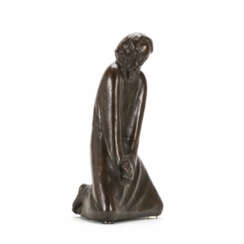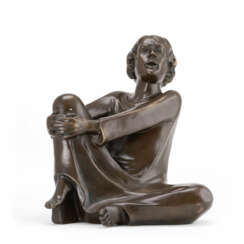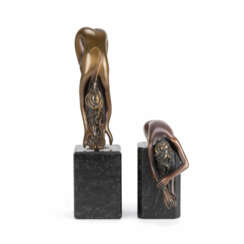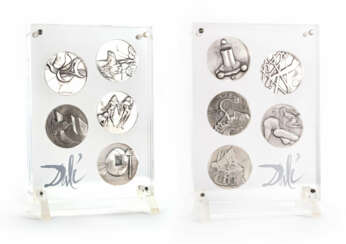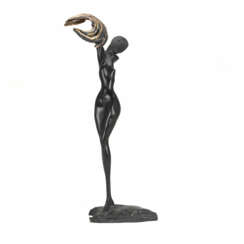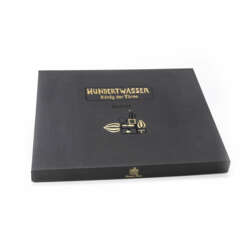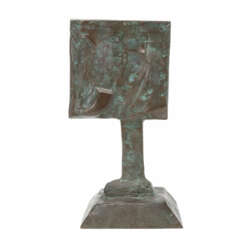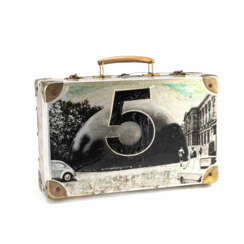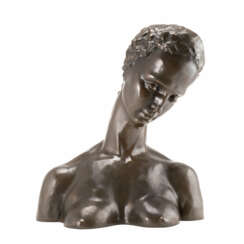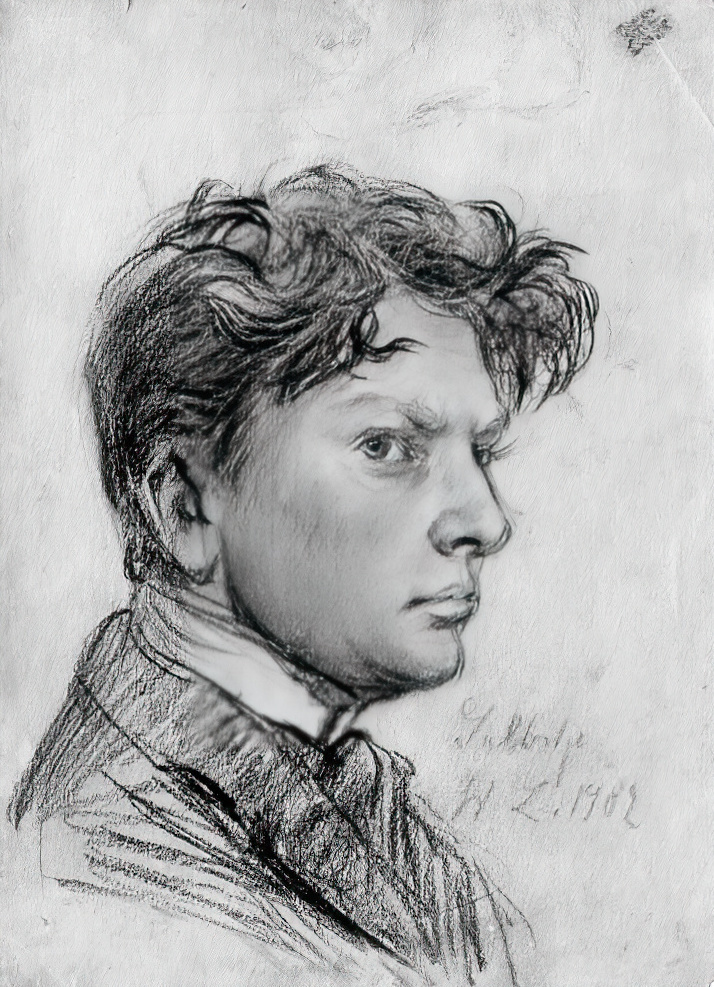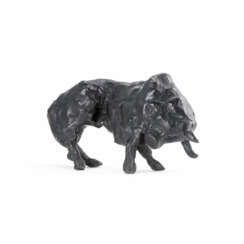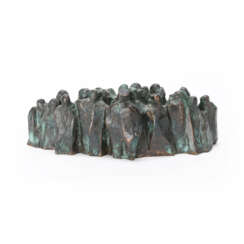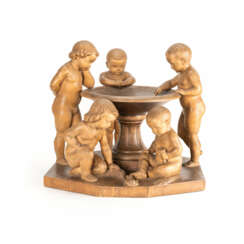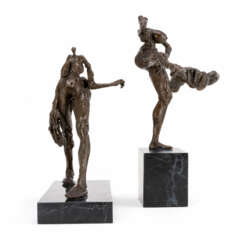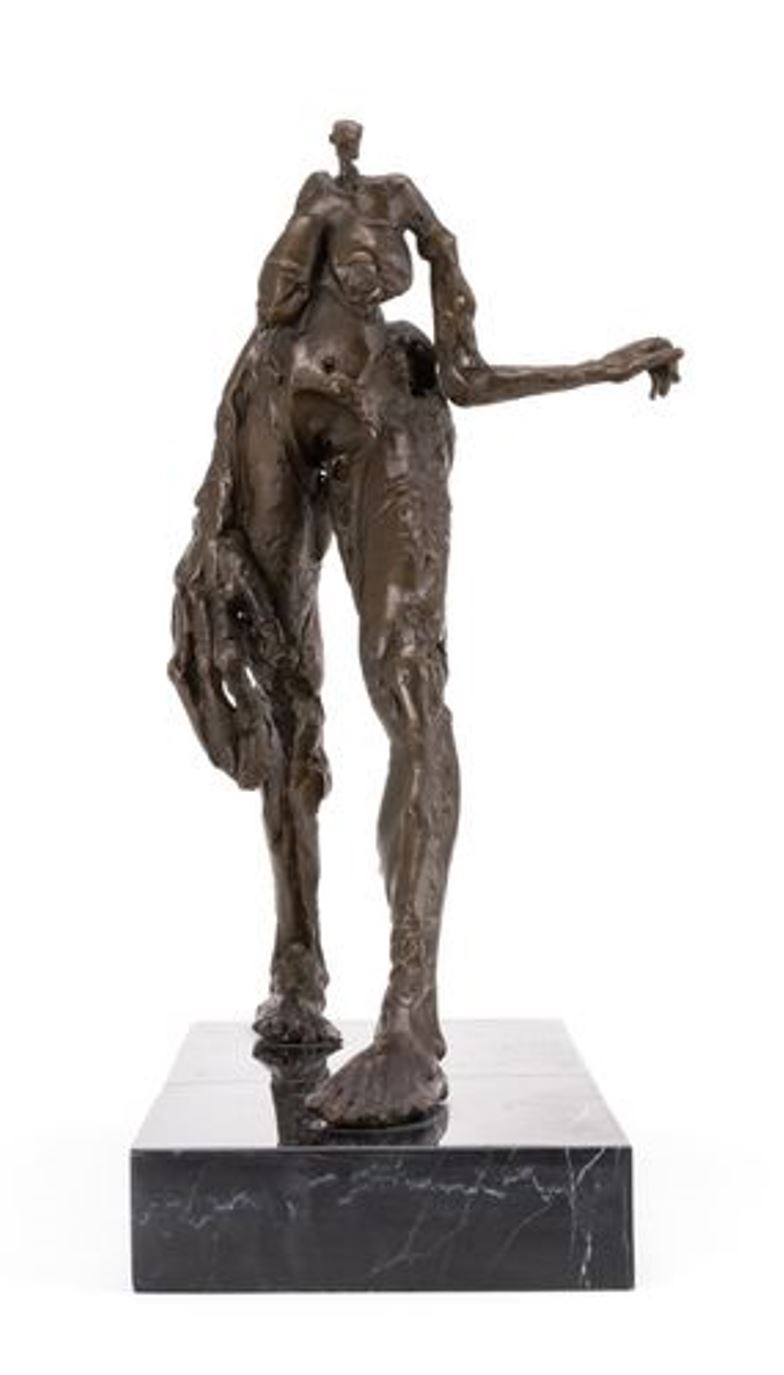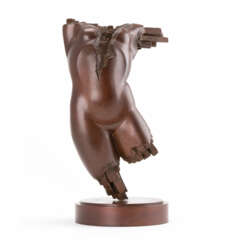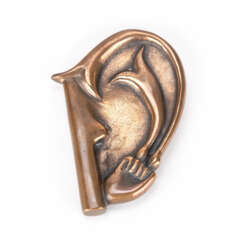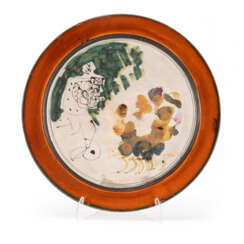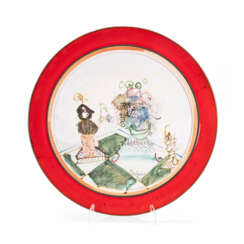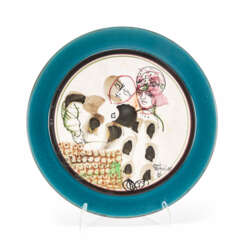
Figures and sculptures — Moderne und Zeitgenössische Kunst
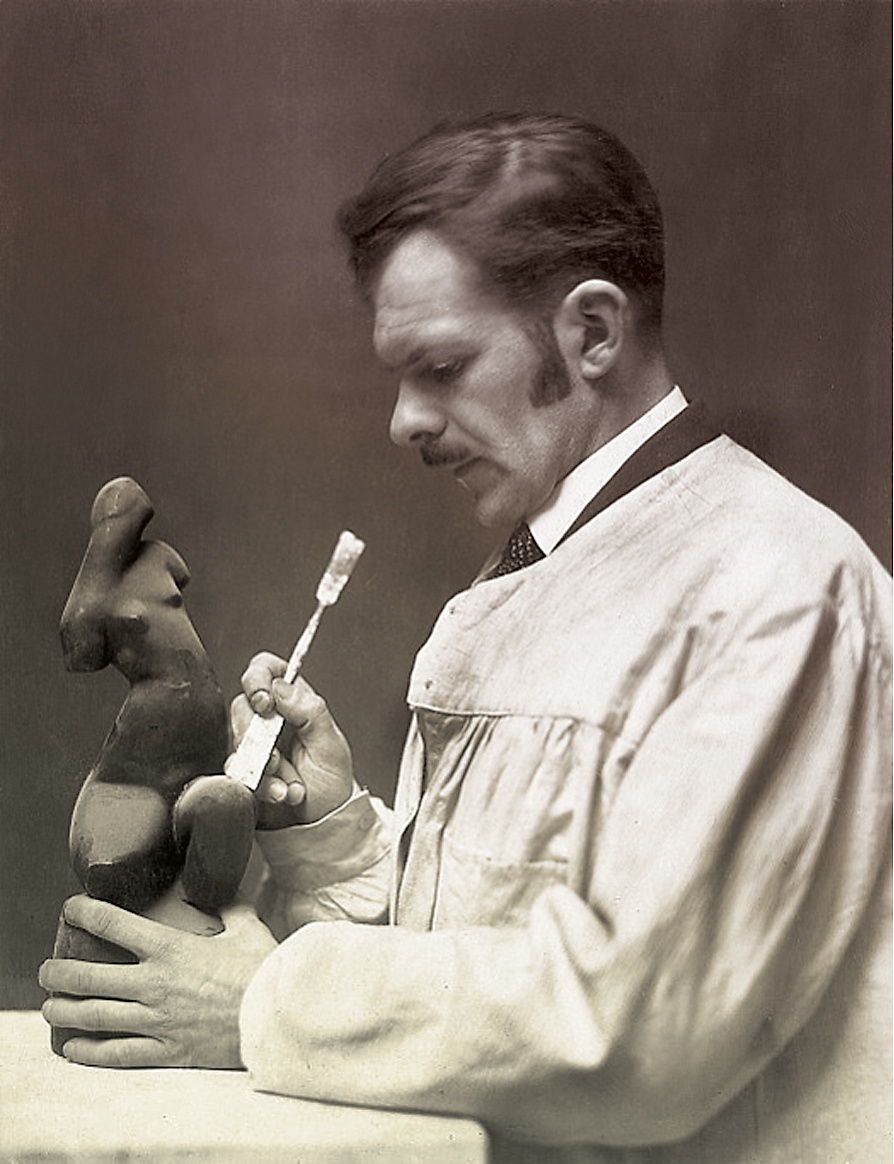
Alexander Porfyrovych Archipenko (Russian: Александр Порфирьевич Архипенко) was a Ukrainian-American artist, renowned for his innovative contributions to modern sculpture and painting. Born in Kyiv, Ukraine, then part of the Russian Empire, Archipenko defied traditional art forms by integrating elements of Cubism, constructing sculptures that emphasized abstraction and form over realistic representation.
Archipenko's work is distinguished by its creative use of materials and exploration of space and volume. He was among the first to employ negative space as a sculptural element, a technique that would influence countless artists in the years to follow. His sculptures often depicted the human form in fragmented or reassembled states, challenging viewers' perceptions and expectations.
Notable works by Archipenko, such as "Woman Combing Her Hair" and "Walking," can be found in prestigious museums and galleries worldwide, including the Museum of Modern Art in New York and the Centre Pompidou in Paris. These pieces exemplify his talent for blending sculptural depth with dynamic motion, making him a pivotal figure in the transition from traditional to modern art.
For collectors and experts in art and antiques, Archipenko's oeuvre represents a fascinating intersection of culture, innovation, and artistic evolution. His ability to transcend cultural boundaries while pioneering new forms and techniques in both sculpture and painting places him among the most influential artists of the 20th century.
To stay informed on new product sales and auction events related to Alexander Porfyrovych Archipenko, we invite you to sign up for updates. This subscription ensures that enthusiasts and collectors alike are always in the know regarding opportunities to acquire works by this monumental artist.
.jpg)
Ernst Heinrich Barlach was a German expressionist sculptor, medallist, printmaker and writer. Although he was a supporter of the war in the years leading to World War I, his participation in the war made him change his position, and he is mostly known for his sculptures protesting against the war. This created many conflicts during the rise of the Nazi Party, when most of his works were confiscated as degenerate art. Stylistically, his literary and artistic work would fall between the categories of twentieth-century Realism and Expressionism.
.jpg)
Ernst Heinrich Barlach was a German expressionist sculptor, medallist, printmaker and writer. Although he was a supporter of the war in the years leading to World War I, his participation in the war made him change his position, and he is mostly known for his sculptures protesting against the war. This created many conflicts during the rise of the Nazi Party, when most of his works were confiscated as degenerate art. Stylistically, his literary and artistic work would fall between the categories of twentieth-century Realism and Expressionism.
.jpg)
Ernst Heinrich Barlach was a German expressionist sculptor, medallist, printmaker and writer. Although he was a supporter of the war in the years leading to World War I, his participation in the war made him change his position, and he is mostly known for his sculptures protesting against the war. This created many conflicts during the rise of the Nazi Party, when most of his works were confiscated as degenerate art. Stylistically, his literary and artistic work would fall between the categories of twentieth-century Realism and Expressionism.
.jpg)
Ernst Heinrich Barlach was a German expressionist sculptor, medallist, printmaker and writer. Although he was a supporter of the war in the years leading to World War I, his participation in the war made him change his position, and he is mostly known for his sculptures protesting against the war. This created many conflicts during the rise of the Nazi Party, when most of his works were confiscated as degenerate art. Stylistically, his literary and artistic work would fall between the categories of twentieth-century Realism and Expressionism.
.jpg)
Ernst Heinrich Barlach was a German expressionist sculptor, medallist, printmaker and writer. Although he was a supporter of the war in the years leading to World War I, his participation in the war made him change his position, and he is mostly known for his sculptures protesting against the war. This created many conflicts during the rise of the Nazi Party, when most of his works were confiscated as degenerate art. Stylistically, his literary and artistic work would fall between the categories of twentieth-century Realism and Expressionism.
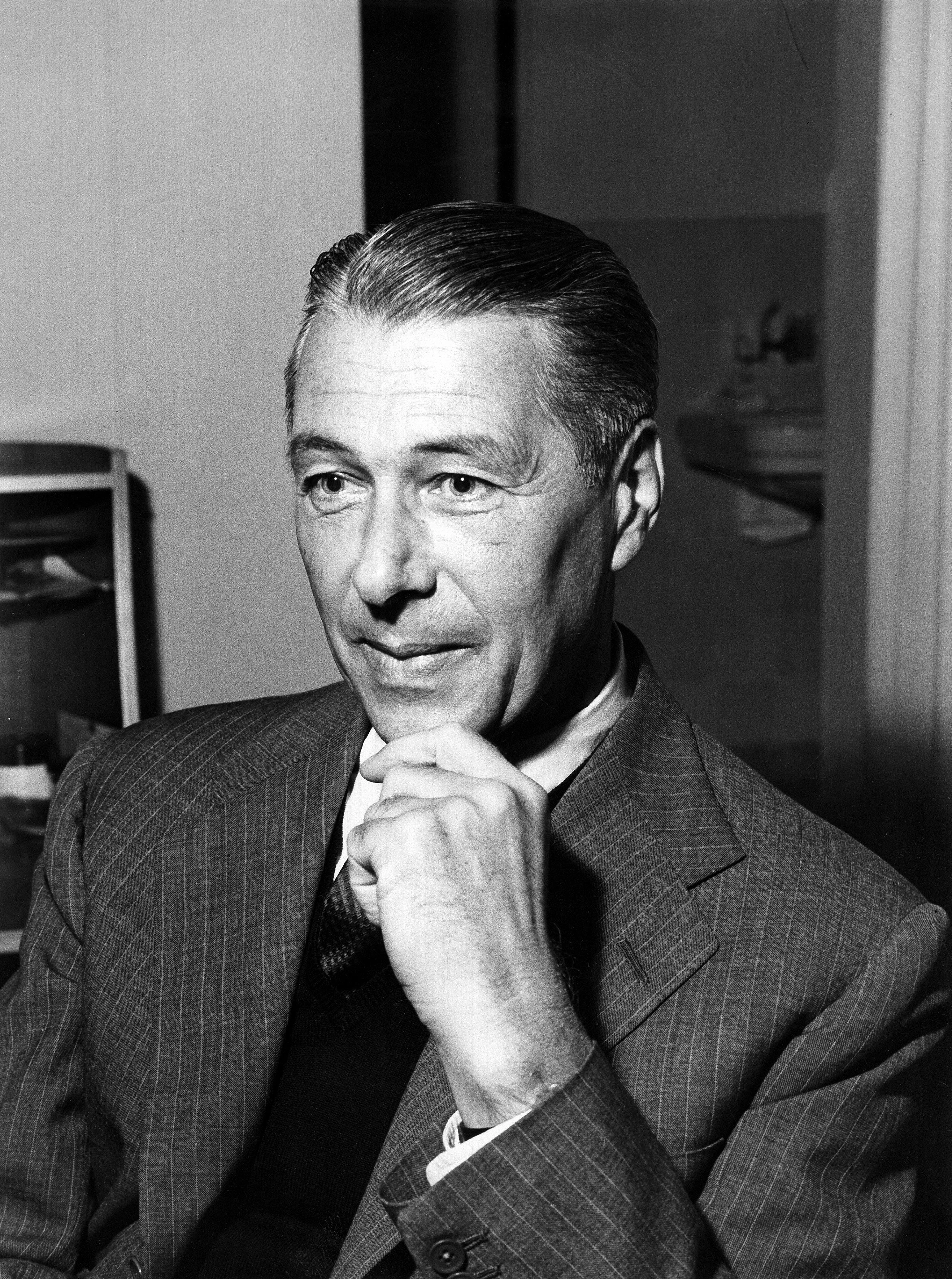
Herbert Bayer was an Austrian and American graphic designer, painter, photographer, sculptor, art director, environmental and interior designer, and architect.

Joseph Heinrich Beuys was a German artist, renowned for his significant contributions to the realms of sculpture, painting, and installation art, which have left a lasting impact on the culture and art world. His work transcended traditional boundaries, merging art with social theory and politics, thus redefining the role of the artist in society. Beuys's unique approach to materials, incorporating substances like fat and felt, symbolized healing and insulation, reflecting his broader philosophical and ecological concerns.
Beuys's art was deeply influenced by his experiences during World War II and his academic background in natural sciences and sculpture. His concept of "social sculpture" proposed that art could transform society, emphasizing creativity as a fundamental component of human existence. This vision led him to use his performances, or "actions," as a medium to communicate his ideas, making him a pivotal figure in the Fluxus movement. Notable works such as "How to Explain Pictures to a Dead Hare" and "7000 Oaks" exemplify his innovative use of performance and environmental art to engage and challenge the public.
His legacy is preserved in major museums and galleries worldwide, including the Museum of Modern Art in New York and the Tate Modern in London. These institutions house key pieces that exemplify Beuys's diverse artistic output, from his early drawings and sculptures to his later installations and public interventions. His influence extends beyond the art world, impacting environmental activism and educational reform, underscoring his belief in the transformative power of art.
For collectors and experts in art and antiques, Joseph Heinrich Beuys remains a figure of immense interest, not only for his groundbreaking artworks but also for his profound impact on contemporary art theory and practice. To stay informed about new product sales and auction events related to Beuys, we invite you to sign up for updates. This subscription ensures you are always in the loop regarding opportunities to engage with the enduring legacy of one of the most influential artists of the 20th century.
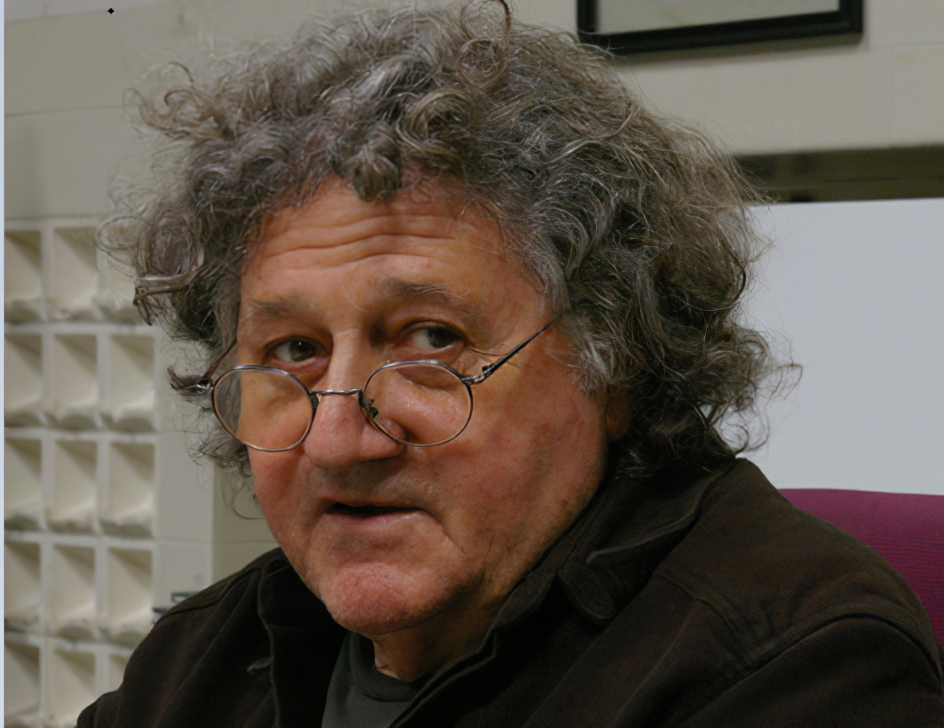
Bruno Bruni senior is an Italian lithographer, graphic artist, painter and sculptor. He became commercially successful in the 1970s. In 1977, he won the International Senefeld award for Lithography. He has since become one of the most successful Italian artists in Germany and one of Germany's best known lithographers.

Salvador Dalí, a Spanish Surrealist painter and printmaker, is celebrated for his vivid and imaginative works that delve into subconscious imagery. Born on May 11, 1904, in Figueres, Catalonia, Spain, Dalí's early exposure to Impressionism and Renaissance masters significantly influenced his artistic development. His education in fine arts in Madrid further shaped his style, leading him to experiment with Cubism and avant-garde movements. In the late 1920s, Dalí embraced Surrealism, joining the Surrealist group in 1929 and rapidly becoming one of its most prominent figures.
Dalí's most famous work, "The Persistence of Memory," completed in 1931, epitomizes the Surrealist movement with its iconic melting clocks symbolizing the fluidity of time. His artistic repertoire was diverse, including painting, graphic arts, film, sculpture, design, and photography, often incorporating themes of dreams, the subconscious, sexuality, religion, and science. Despite his remarkable artistic contributions, Dalí's eccentric and flamboyant public persona often overshadowed his work. He faced criticism for his public support of the Francoist regime and the authenticity of some of his late works.
Dalí's legacy is preserved in major museums, notably the Dalí Theatre-Museum in Figueres and the Salvador Dalí Museum in St. Petersburg, Florida. These institutions showcase his extensive and varied body of work, illustrating his profound impact on Surrealism, pop art, and contemporary artists.
If you're captivated by the surreal world of Salvador Dalí and want to stay informed about new sales and auction events featuring his works, sign up for our updates. Our service is tailored specifically for art collectors and experts, providing timely information and insights into the vibrant market of Dalí's art. Remember, this subscription is focused solely on bringing you the latest in product sales and auction events related to Salvador Dalí. Don't miss out on the opportunity to enrich your collection with pieces from one of the most influential surrealists of all time. Sign up now and be the first to know about these exclusive events.
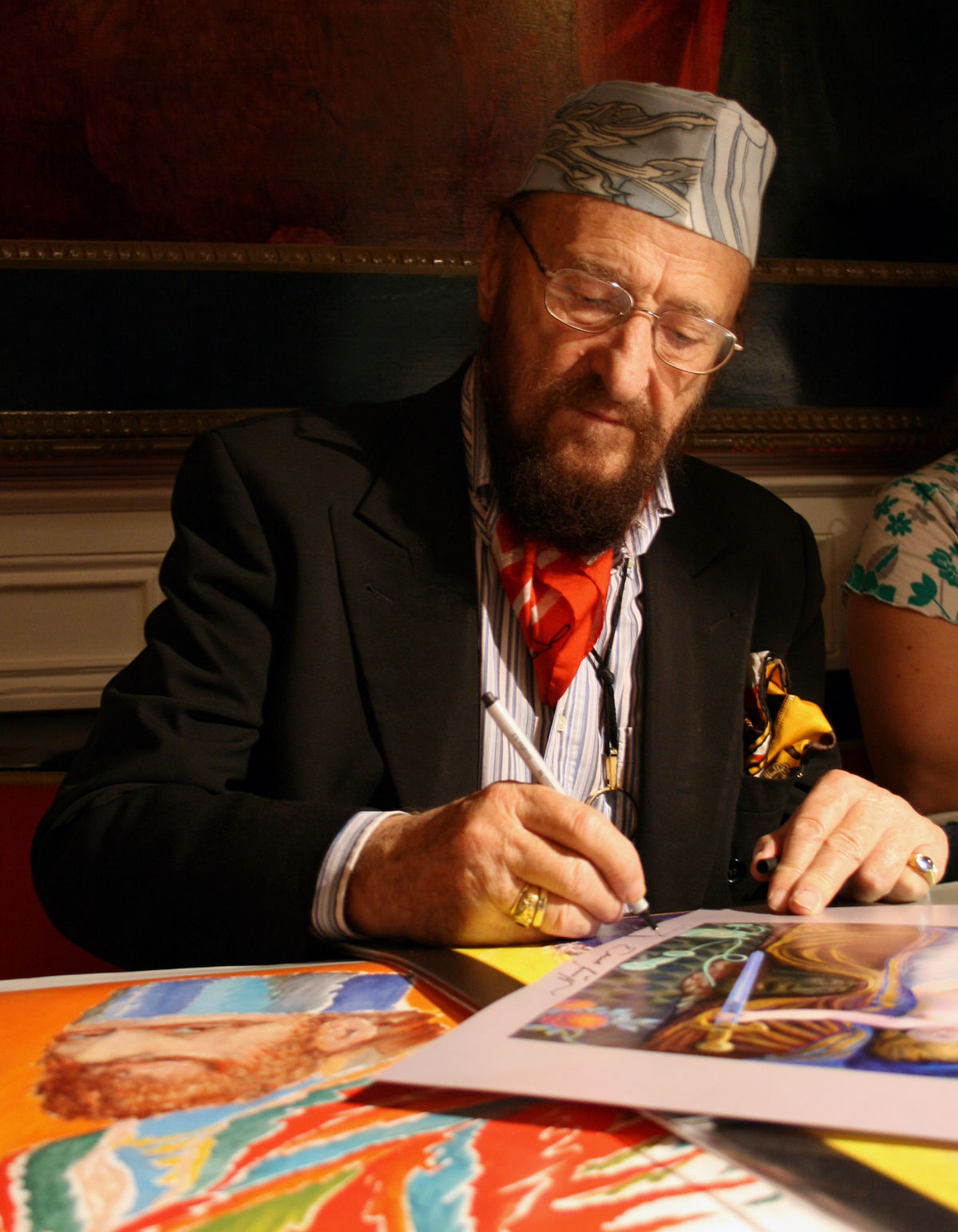
Ernst Fuchs was an Austrian painter, draftsman, printmaker, sculptor, architect, stage designer, composer, poet, and one of the founders of the Vienna School of Fantastic Realism. In 1972, he acquired the derelict Otto Wagner Villa in Hütteldorf, which he restored and transformed. The villa was inaugurated as the Ernst Fuchs Museum in 1988.
 Gerstein.jpg)
David (Dudu) Gerstein is an Israeli painter, sculptor, draftsman and printmaker.
Gerstein received a broad education: he studied at the Bezalel Academy, then at the École des Beaux-Arts in Paris, in New York he continued his studies at the Art Students League, and in 1974 he received a diploma from St. Martin's School of Art in London. He works freely in all media: printmaking, painting, sculpture, drawing, murals and monumental creations.
In the 1970's Gerstein began experimenting with three-dimensional works, leaving cut-out fragments hanging in space. After many innovations, David began creating wall sculptures made with laser cutting and automotive paint. He created his own kind of pop art and gained an international reputation for his signature style with colorful images of numerous cyclists, butterflies, dancers, runners and more. With the advent of computers, he was able to convert his drawings into perfectly formatted patterns that can be faithfully reproduced in a metalworking shop.
And Gerstein's recognizable monumental sculptures can be seen in cities around the world. His street sculpture Momentum is Singapore's tallest public sculpture.
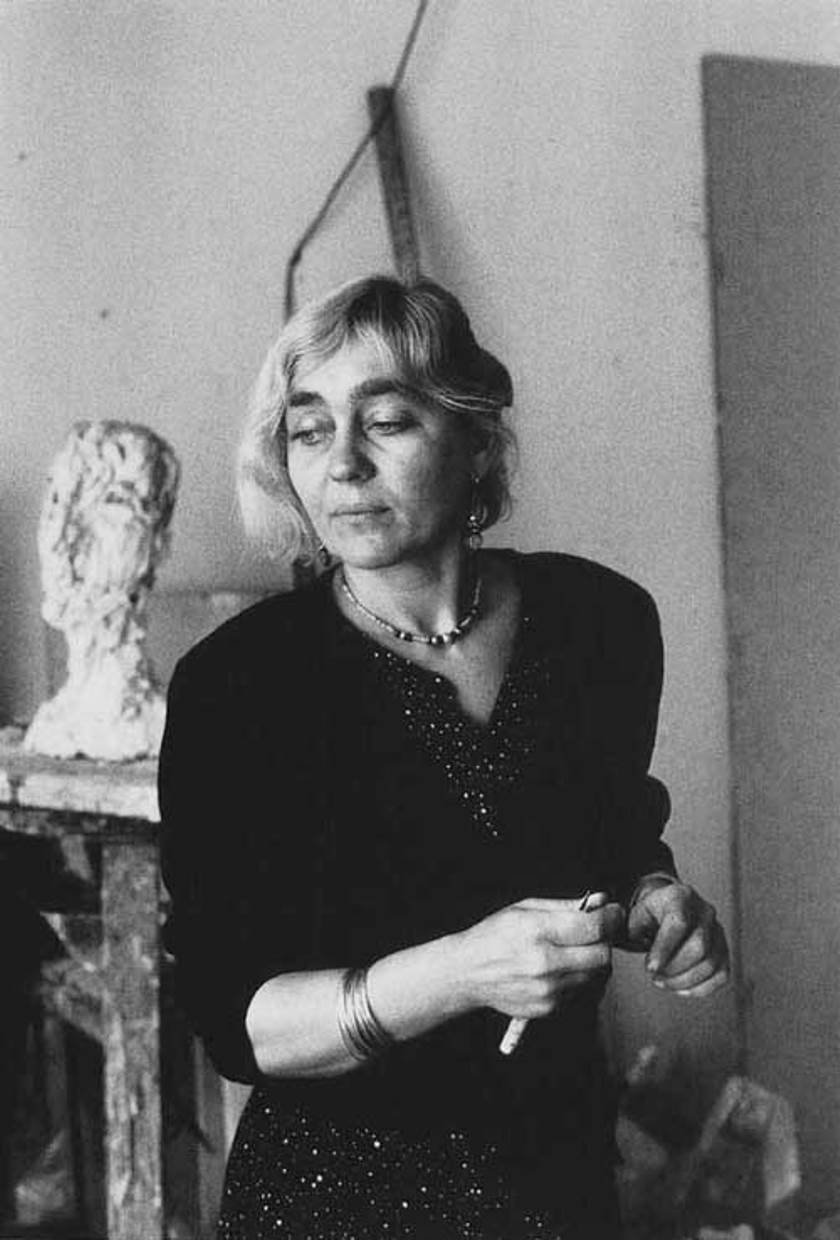
Sabina Grzimek (German: Sabina Grzimek) is a German sculptor.
Sabina is the daughter of sculptor Waldemar Grzimek (1918-1984) and artist and ceramist Christa von Karnap. She apprenticed at the Meissen porcelain manufactory, then studied sculpture in Berlin. Sabina Grzimek created a large number of bronze, plaster, terracotta and clay sculptures, some of which are placed in public spaces in European cities.
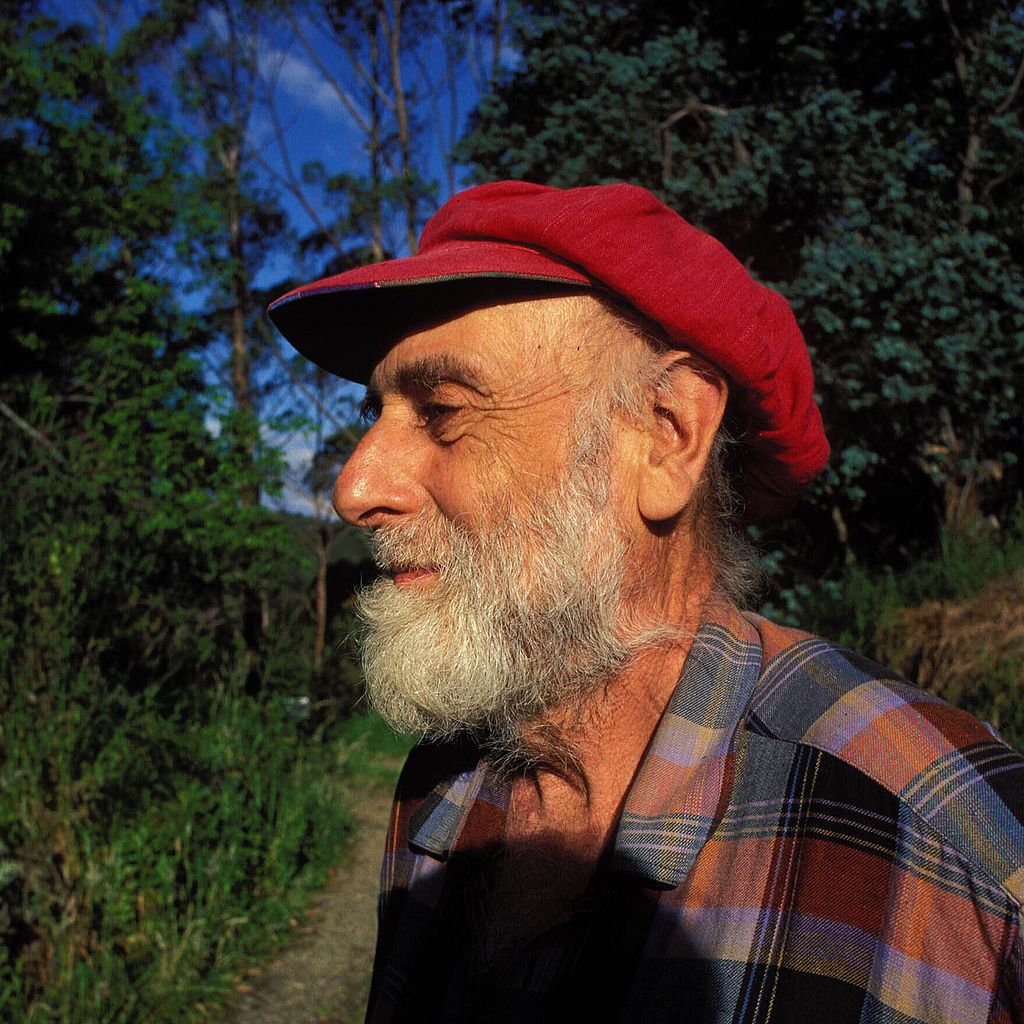
Friedensreich Regentag Dunkelbunt Hundertwasser was an Austrian visual artist and architect who also worked in the field of environmental protection.
Hundertwasser stood out as an opponent of "a straight line" and any standardization, expressing this concept in the field of building design. His best known work is the Hundertwasserhaus in Vienna, which has become a notable place of interest in the Austrian capital, characterised by imaginative vitality and uniqueness.

Andrzej Irzykowski is a Polish painter, sculptor and restorer living and working in Germany.
Andrzej studied at the Academy of Fine Arts in Gdansk after an apprenticeship as a mason in conservation workshops. As a freelance artist, Andrzej Irzykowski has been living and working in Germany for over 30 years.
The fusion of figurative and abstract forms has become a hallmark of Andrzej Irzykowski's work. One of his most recent exhibitions was entitled "Heads" - anthropomorphic sculptures in realist, surrealist and abstract expression. Irzykowski has exhibited his work in numerous solo and group exhibitions at home and abroad and has received many prizes and awards.

Andrzej Irzykowski is a Polish painter, sculptor and restorer living and working in Germany.
Andrzej studied at the Academy of Fine Arts in Gdansk after an apprenticeship as a mason in conservation workshops. As a freelance artist, Andrzej Irzykowski has been living and working in Germany for over 30 years.
The fusion of figurative and abstract forms has become a hallmark of Andrzej Irzykowski's work. One of his most recent exhibitions was entitled "Heads" - anthropomorphic sculptures in realist, surrealist and abstract expression. Irzykowski has exhibited his work in numerous solo and group exhibitions at home and abroad and has received many prizes and awards.
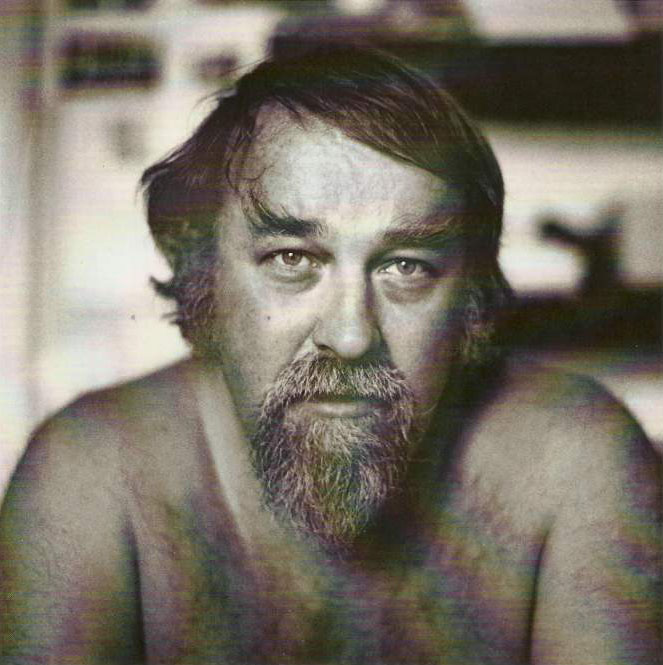
Edward Ralph Kienholz was an American installation artist and assemblage sculptor whose work was highly critical of aspects of modern life. From 1972 onwards, he assembled much of his artwork in close collaboration with his artistic partner and fifth wife, Nancy Reddin Kienholz. Throughout much of their career, the work of the Kienholzes was more appreciated in Europe than in their native United States, though American museums have featured their art more prominently since the 1990s.
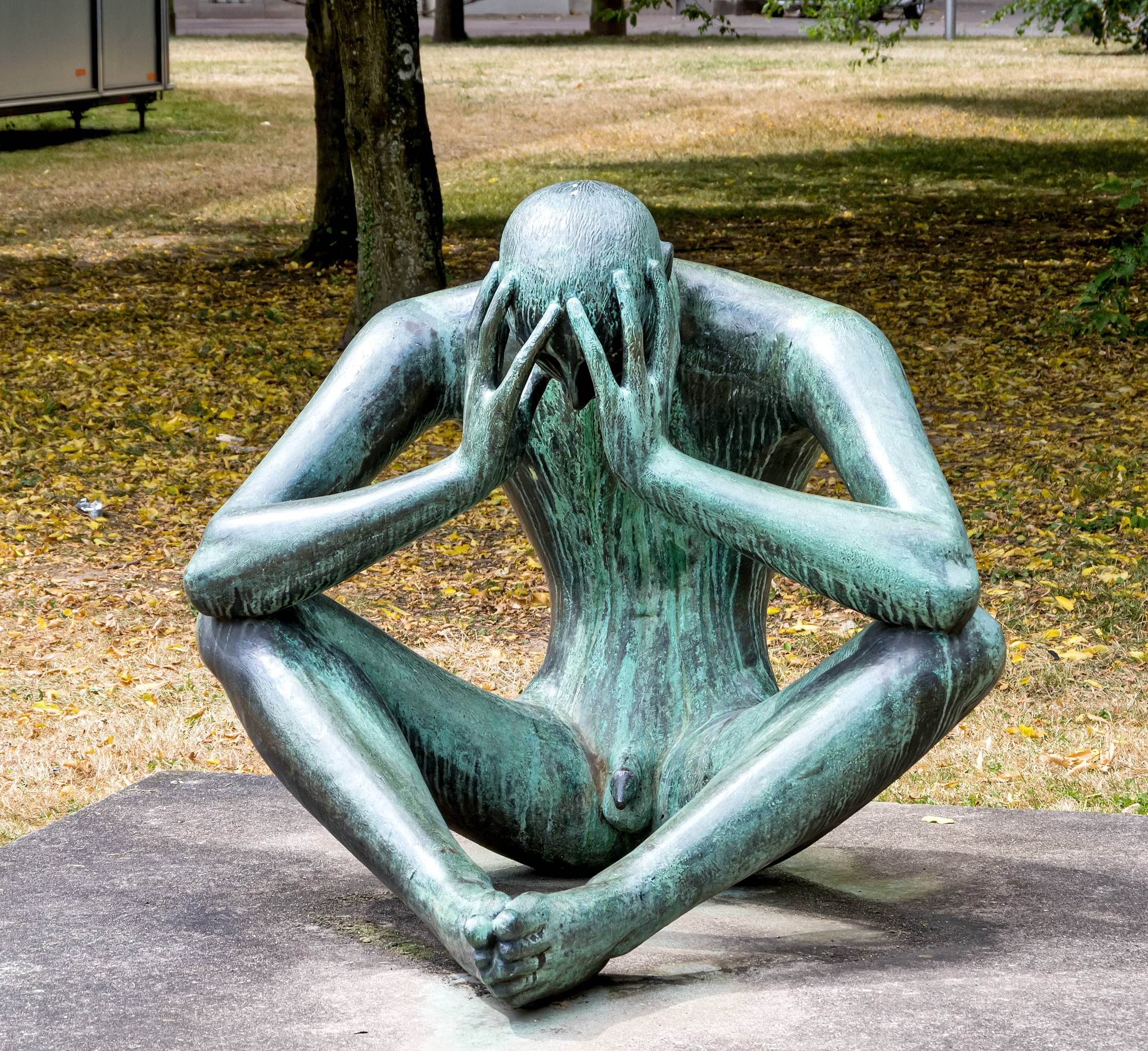
Karl-Heinz Krause is a German sculptor.
Krause survived the war and imprisonment, and began studying sculpture at the Academy of Fine Arts in Berlin in 1947. In developing his style, he always combined the depiction of the human body with the laws of physics (weight - counterbalance) as a form-forming criterion. Thanks to this he achieved a characteristic balance and harmony in his works. In general, Krause's figures resemble living geometric forms in their elegance.
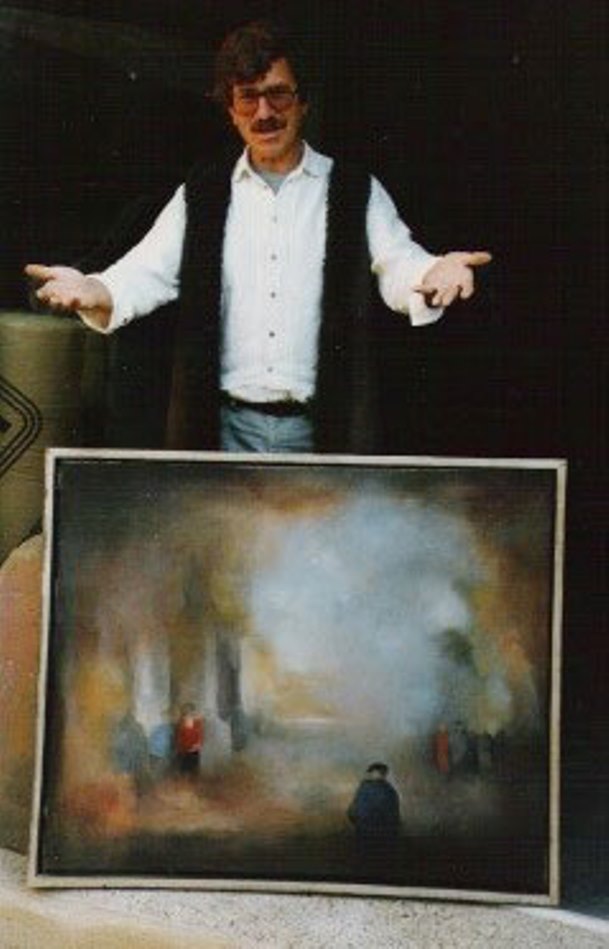
Werner Lichtner-Aix was a German painter, graphic artist, sculptor, and graphic designer.
Inspired by the idea of community and the close connection between man and nature, the artist painted exhilarating landscape paintings using a variety of techniques. He created many works of art, including oil, watercolor and gouache paintings, collages and sculptures.

Werner Lichtner-Aix was a German painter, graphic artist, sculptor, and graphic designer.
Inspired by the idea of community and the close connection between man and nature, the artist painted exhilarating landscape paintings using a variety of techniques. He created many works of art, including oil, watercolor and gouache paintings, collages and sculptures.
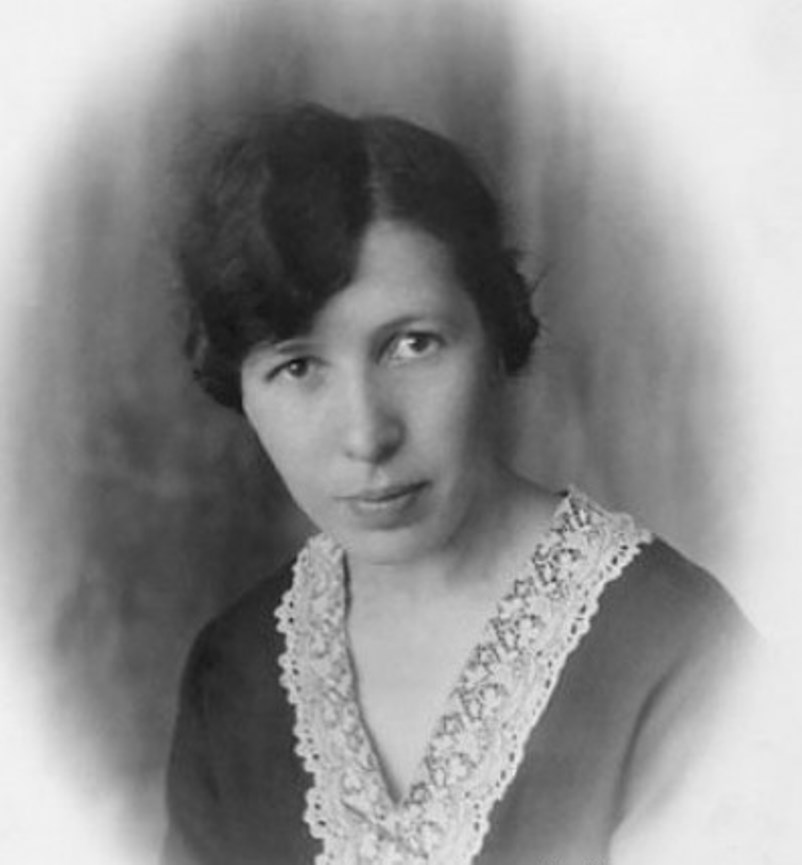
Torborg Lindberg-Karlsson is a Swedish artist and sculptor.
She created wood-carved and painted sculptures depicting people in Nordic costumes, mostly from the Sami culture. She also carved church jewelry and utensils.
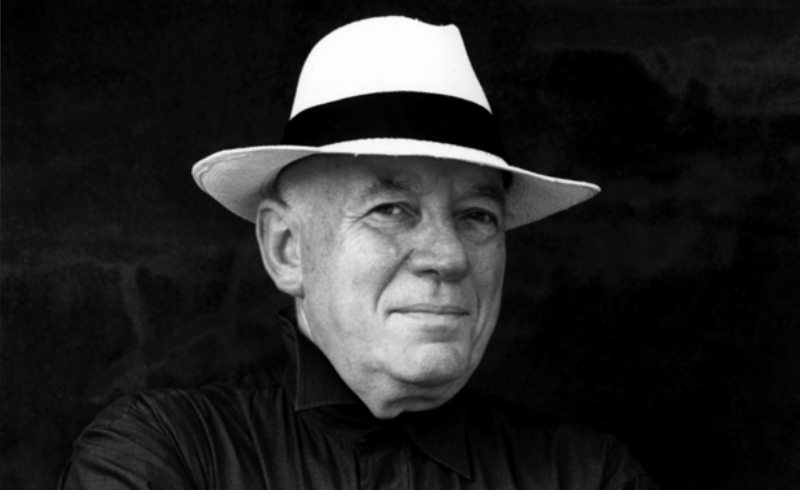
Horst Linn is a German sculptor and draftsman, teacher, living and working in Dortmund, Germany.
Horst was born into the family of sculptor Willi Linn and received his primary art education from his father. From 1956 Horst Linn studied at the Saarbrücken State School of Arts and Crafts and gradually honed his skills in different techniques.
Horst Linn's works are usually laconic, but the oblique folds of the sculptor's work obey the strict laws of constructivism. Whether it is the early folds of corrugated sheet iron or the later wall reliefs of folded aluminum steel or sheet metal, usually lacquered, all of his works are based on the principle of "less is more." As a spatial artist, he places works in urban, public and private spaces.
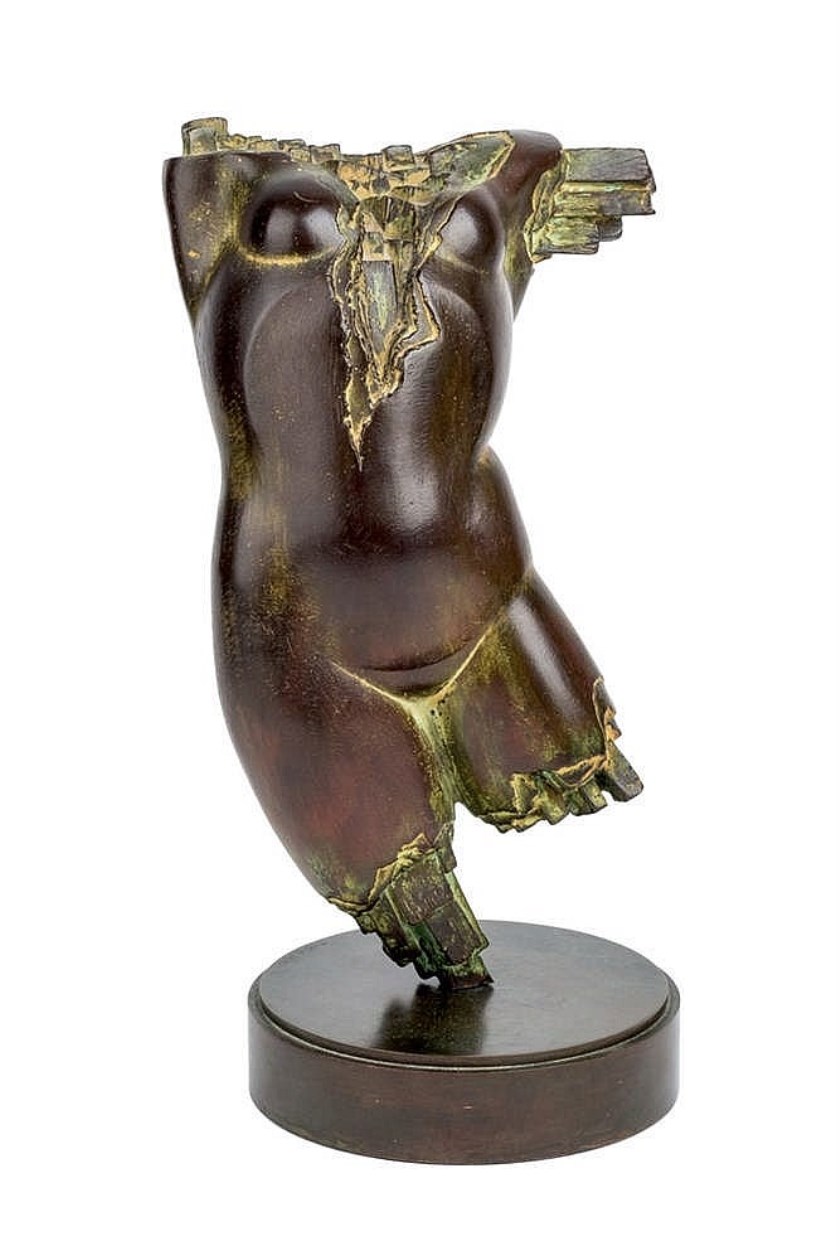
Carlos García Muela is a Spanish sculptor.
Carlos Muela studied at the National School of Fine Arts in Tetouan, Spanish protectorate of Morocco, he moved to Madrid in 1974.
His first sculptures were made of sandstone and were rather crude. Later he began to create more expressionist works in iron or bronze. In 1970, Muela began his series of Torsos of classical character, which became the basis of his work. The sculptor achieved highly expressive figures by breaking and layering them. This was achieved by spreading layers of wax, which broke at the moment of casting in bronze, thus enhancing the effect of the passage of time on the sculptural object.
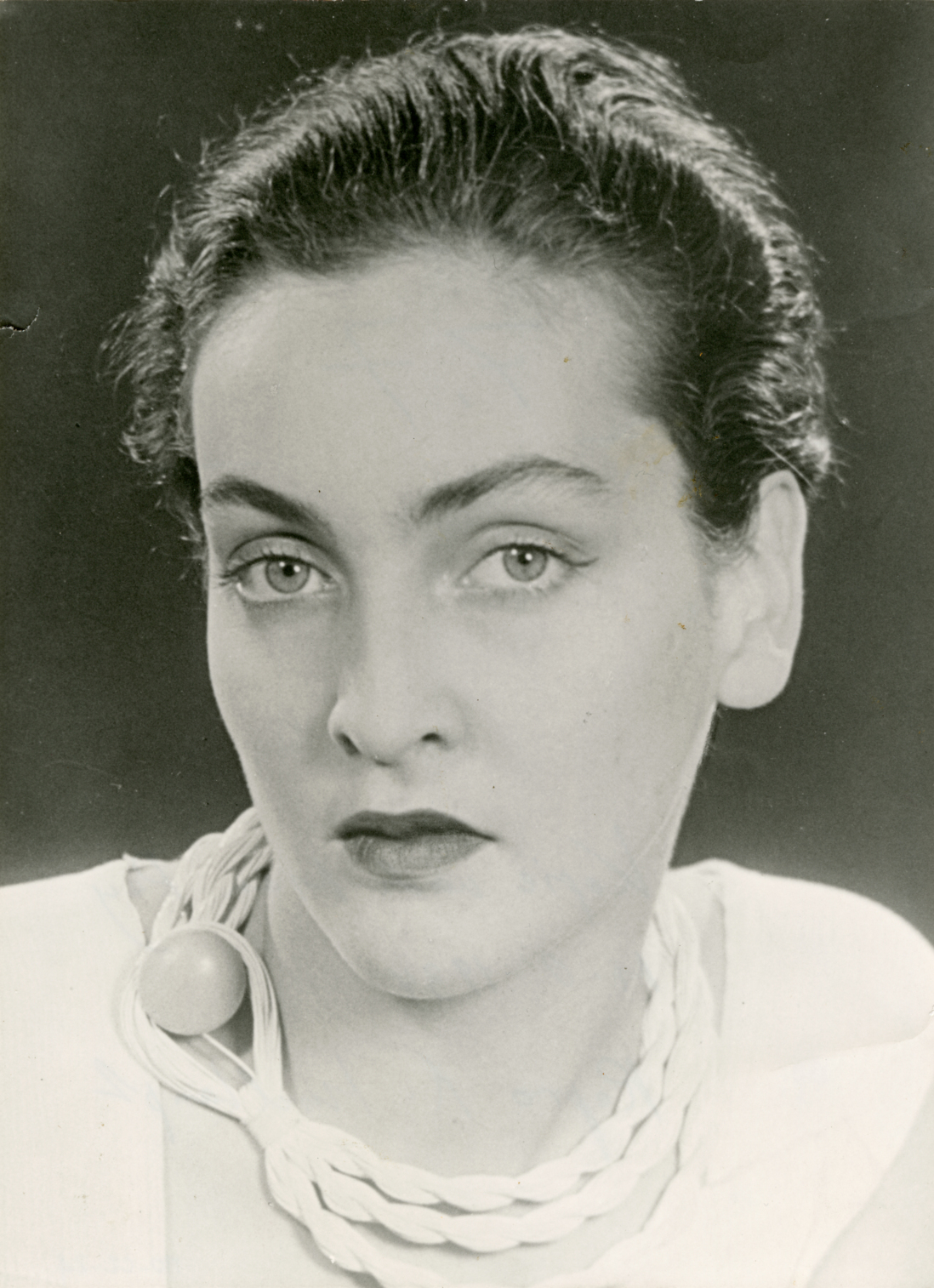
Meret Oppenheim was a Swiss artist. She is best known for her surrealist sculptures and objects, which often featured everyday objects that had been transformed through unexpected combinations and juxtapositions.
Oppenheim was part of the surrealist movement, which aimed to liberate the unconscious mind and challenge traditional ideas about art and reality. Her most famous work is "Object" (1936), a fur-covered teacup, saucer, and spoon that has become an iconic symbol of surrealist art.
Oppenheim's work often explored themes of gender and sexuality, and she was interested in the idea of transforming everyday objects into works of art. She frequently used materials such as fur, leather, and feathers in her work, which added a tactile element to her sculptures.
Oppenheim was also an accomplished painter and photographer, and her work often incorporated elements of these mediums as well. She was a trailblazer for women in the art world and was one of the few female artists to achieve recognition during the male-dominated surrealist movement.
Today, Oppenheim's work is celebrated for its wit, humor, and subversive power, and she is considered one of the most important artists of the 20th century.
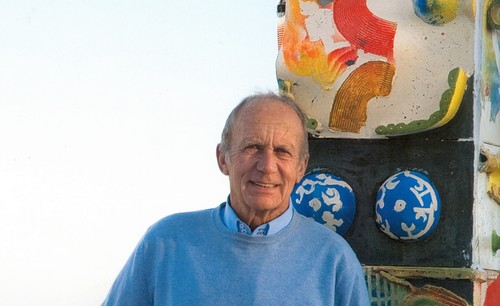
Gilbert Portanier is a French artist, painter and ceramist.
He studied architecture at the Ecole des Beaux-Arts in Paris, then opened his own studio in Vallauris. Portanier is known for the variety of forms of his ceramic works, which range from the most classical and structured to the most baroque. He is often called the "wizard of colors.

Gilbert Portanier is a French artist, painter and ceramist.
He studied architecture at the Ecole des Beaux-Arts in Paris, then opened his own studio in Vallauris. Portanier is known for the variety of forms of his ceramic works, which range from the most classical and structured to the most baroque. He is often called the "wizard of colors.

Gilbert Portanier is a French artist, painter and ceramist.
He studied architecture at the Ecole des Beaux-Arts in Paris, then opened his own studio in Vallauris. Portanier is known for the variety of forms of his ceramic works, which range from the most classical and structured to the most baroque. He is often called the "wizard of colors.
